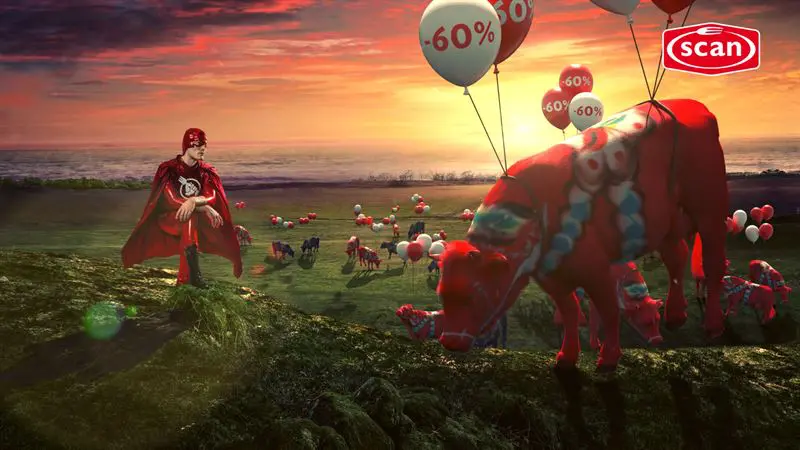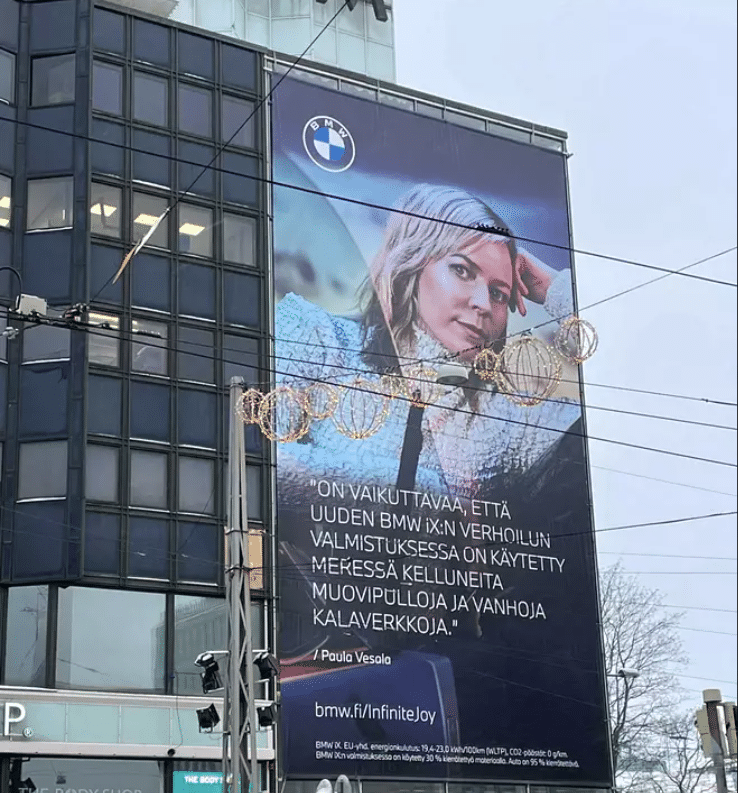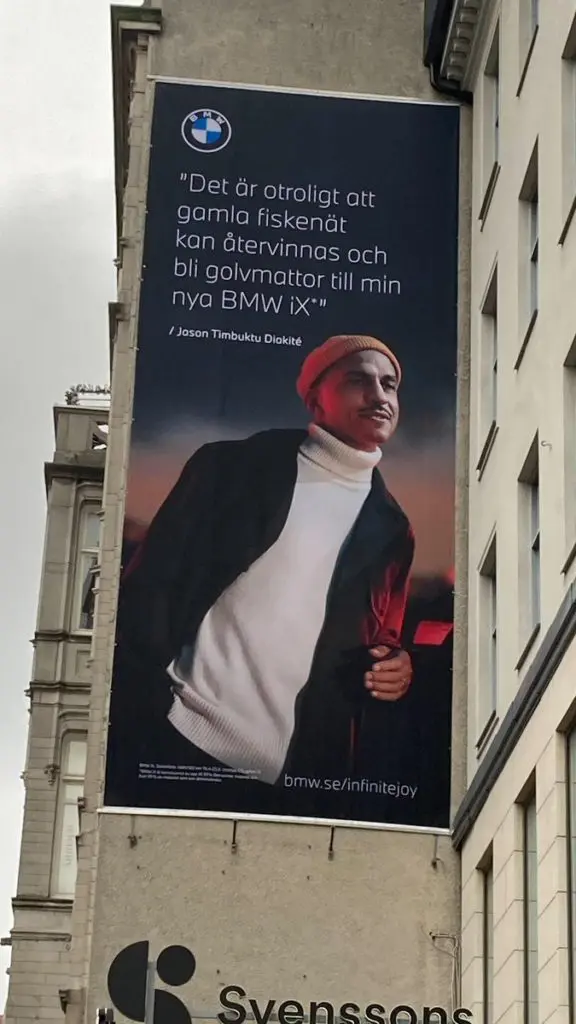4 Examples of Companies Accused of Greenwashing (Nordics)

Exploring 4 cases of alleged greenwashing by companies in the Nordic region, shedding light on sustainability challenges and consumer awareness.
Previously we published about why greenwashing is often rooted in a lack of knowledge in the field rather than willing intent to mislead consumers, and how companies can run a quick check on their communications in order to avoid the most common pitfalls of greenwashing.
In this article, I will briefly introduce 4 companies that have been accused of greenwashing in the Nordics.
- Three of the cases have been handled by the consumer protection authority, and one of them was resolved with the supervision authority stating that there was actually nothing wrong with the company’s conduct.
- The fourth company being presented has not had its cases ruled by the consumer protection authority, rather it has just been tangled with the bad press lately.
I wish to use these cases as an example because such cases can be a learning:
- for all businesses to understand what can be construed as greenwashing,
- what can be seen as greenwashing in the eyes of the authorities, and
- how following the law is not always enough in order to win the public’s hearts.
- Example 1. Arla – KESO Cottage Cheese Packaging
- Example 2. Atria and Renewed Minced Meat Packaging
- Example 3. HKScan & "Plays a Role" TV advertisement
- Example 4. BMW's sustainability and circularity advertisements
- Related Posts
Example 1. Arla – KESO Cottage Cheese Packaging
Swedish dairy company Arla operating in Finland had renewed its KESO-cottage cheese packaging into cardboard ones. The company printed on the renewed cardboard packaging, that:

“the climate impact of the new cardboard packaging is 60% lower than the one of the old plastic packaging”.
Arla had explained on its website how the climate impact they were referring to was measured and defined.
What were the issues highlighted in the case?
The Finnish consumer protection authority ruled this case as problematic and requested Arla to make certain changes to its communication on the packaging so that it would not be considered misleading. Arla changed the packaging in accordance with the request of the authority.
Why did the company receive such harsh treatment, even though they had explained and provided information regarding their claim on their website? They were not making a statement that would be untrue.
The consumer protection authority considered, that there were 3 issues:
- The term “climate impact” is still rather new, and it does not have a set definition. In addition to the amount of greenhouse gases, it could refer to climate change adaptation, production of raw materials, or energy usage.
- The consumer was required to visit Arla’s website in order to discover, that Arla had meant the total amount of greenhouse gas emissions caused by the packaging.
- Essentially, in the eyes of the consumer protection authority, the issue was, that the consumer was unable to fully know what Arla meant, just by looking at the packaging.
Click to read the full case in Finnish on the consumer protection authority’s website.

The new packaging with wording following the Finnish consumer protection authority’s recommendation:
“New packaging has significantly larger portion of renewable raw materials than the old plastic cup. This means, that the climate impact measured in CO2 equivalents is approx. 60% lower when compared to the old cup.”
Key takeaways from Arla’s case in Finland?
The wording chosen by Arla was considered to be excessively generalizing, and thus potentially misleading and therefore at risk of being construed as greenwashing. The consumer protection authority is interested in the overall picture of the marketing, not just an individual claims’ truthfulness. Therefore, all the necessary information should also be available on the product itself for the consumer to access, or there should be very clear guidance on how to access further information.
Example 2. Atria and Renewed Minced Meat Packaging
Atria, a Finnish company producing meat products, published a print ad, in which it stated, that its:

“New packaging has a 30% smaller carbon footprint than the previous plastic box packaging” additionally Atria had printed on the minced meat packagings with the renewed packaging “50% less plastic”
What did the consumer protection authority highlight?
The consumer protection authority pointed out, that carbon footprint may have several meanings: depending on whether the carbon footprint has been calculated based on the total amount of carbon dioxide produced, or if it means the total amount of all greenhouse gases created which has then been converted and expressed in carbon dioxide equivalents (CO2e).
Atria meant carbon footprint measured as Co2e, which is the most often and most widely used metric for carbon footprint. Therefore the consumer protection authority considered the marketing claims to be truthful, and that they could not be considered to be misleading.
Click to read the full case from the consumer protection authority’s website in Finnish.

The key takeaway from Atria’s case in Finland?
The statement made by Atria was considered to be sufficiently exact to not be misleading to consumers. In this case backing up marketing claims with accessible and solid supporting evidence made sure any greenwashing allegations were duly dismissed by the regulatory authorities.
Example 3. HKScan & “Plays a Role” TV advertisement
HKScan, the largest meat producer in the Nordic region, published a television advertisement in Sweden, in which there is a superhero character standing with cows painted with the traditional Swedish “Dala horse” pattern.

The speaker’s voice says:
“Have comfort climate heroes”
“Swedish meat has one of the world’s lowest climate footprints” at the same time while the visual feed is showing balloons with “-60%” written on them.
“Our farms provide biodiversity.”
“And the animals are needed to grow a lot of other things, such as oat drinks.”
“Or light up 350 villas with biogas from Halla Gård”
At the end of the advertisement, a text is shown “Swedish animals play a role” with the company’s logo.
Complaints prompted by the advertisement
The case was studied by the Swedish consumer protection authority based on complaints from 2 private individuals.
Click to read the full case from the Swedish consumer protection authority’s website.
Complaint 1
“It is misleading to claim that meat production is needed when there is clear evidence, that the livestock industry is one of the biggest threats to the environment. To begin by suggesting that environmental heroes can eat meat with a clear conscience is therefore wrong. Arguing that something is good just because it is less bad than another alternative is not a reasonable argument.”
Complaint 2
“It is misleading to claim that the advertiser’s meat production would be good for the environment and biodiversity, when it has been proven, including by the UN, that meat production is one of the biggest threats to the environment and biodiversity.”
What was the consumer protection authority’s ruling on the case?
- The committee assessed the validity of the statement “Swedish meat has one of the world’s lowest climate footprints” and the text “-60%” in connection to that. The committee considered, that such a claim may be used only if it can be verified by satisfactory evidence. The advertiser explained, that the claim was based on a study according to which Swedish beef and pork have 50-60% lower climate impacts than the world average.
- The committee considered, that the information the advertiser was using, did not refer to the advertiser’s meat specifically, but to Swedish meat in general. Thus the resolution related to the first claim was, that the company did not provide sufficient evidence in order to be allowed to present the claim.
- The next statement that was assessed was “Have comfort climate heroes”. The committee considered, that an average consumer would perceive it so, that it can be good for the climate to eat meat.
- Based on the rules for advertising in Sweden, claims that give an impression that a product or business has no – or only a positive – environmental impact, may be used without qualification only if they can be verified with satisfactory evidence. The advertiser had not substantiated this claim. The committee considered this claim to be misleading to consumers.
- As the last one, the Swedish consumer protection authority studied the claim related to biodiversity. The committee first considered that the claim gives an impression, that the company’s product contributes to biological diversity. The advertiser had not provided any evidence for the claim.
- The committee considered, that it can be assumed to be generally known, that grazing animals that keep the landscape open generally contribute to biodiversity. The committee considered, that this claim was not misleading to consumers.
Key takeaways from HKScan’s case with the Swedish consumer protection authority?
- The meat industry in particular is required to be very precise with the advertising it does related to the climate impacts of its products. Therefore the best approach is to avoid any and all generalizations that might be construed as greenwashing.
- In light of this resolution, it would only be acceptable to make climate-related claims if the climate impact of the advertiser’s own production has been extensively studied. Otherwise, it might be perceived as greenwashing.
Example 4. BMW’s sustainability and circularity advertisements
BMW has two cases that have ended up with greenwahing related negative public relations outcomes, but that have not been brought to the consumer protection authority.
The first case took place in Sweden and the second one in Finland. In both cases there were heavy criticisms presented by the oublic in regard to the advertisements, but the consumer protection authority has not taken a stance on either of the cases.
Case 1 – World’s best car for climate
In December 2020, BMW had purchased an advertisement spot on Sunday issue of the county’s largest newspaper, Dagens Nyheter. The Sunday issues are occasionally theme issues and have visiting editors. This Dagens Nyheter paper was a climate change themed special issue and climate change activist Greta Thurnberg was the visiting editor.
BMW had created an advertisement, in which there was a protest sign, in the style of Greta Thunberg’s “Skolstrejk för klimatet”, “School strike for climate”. BMW’s sign stated:

“World’s best car brand for climate” and underneath that capital statement, with small text “BMW is the world’s most sustainable car manufacturer according to Dow Jones Sustainability Index 2020”
The criticism that BMW received for its advertisement?
One of the most common arguments presented by the public was, that a car brand simply cannot be good for the climate.
However, when it comes to the advertisement itself, BMW was being very precise on what it had based its claim on. When looking at the Dow Jones Sustainability Index for 2020, we can find that 39 companies from the automotive industry were compared with the same exact criteria, and BMW reached an average score of 80 points out of 100, while the industry average was only 38 points.
Can you draw conclusions about climate friendliness from measuring ESG markers?
For the Environmental impact assessment, Dow Jones had compared Climate Strategy, Low Carbon Strategy, and Operational Eco-efficiency. BMW was an industry leader with its Climate Strategy and received a significantly better score for Low Carbon Strategy and Operational Eco-efficiency than the industry average. However, it did not have the industry’s highest score on Low Carbon Strategy or Operational Eco-efficiency.
Key takeaways from BMW’s “Best car brand for climate” advertisement?
- The company was extremely precise with its wording and referencing for the advertisement. Having seen the industry average vs. BMW’s own score, it is hard to say, that BMW would not be an industry leader when it comes to having a climate strategy in place and actually trying to make an impact and lead the way for other brands in the industry.
- The public outrage caused by the advertisement seems to have more to do with the going sentiment, rather than with the research results. The case is in its own way quite similar to the HKScan case, in the sense, that a car manufacturer is claiming to be relatively environmentally friendly compared to others. However, as opposed to the HKScan case, here the brand has had its own products studied and made the study accessible to the consumers viewing the advertisement.
Case 2 – Infinite Joy campaign of BMW iX in Finland and Sweden
BMW iX is a fully electric midsize SUV, that was presented for the first time in Paris Motor Show in 2018, and was production ready in 2020 November.
In 2022 January, BMW ran a circularity campaign “Infinite Joy” on billboards and newspapers with several local artists in Finland and Sweden. Based on a cached version of the campaign landing page at bmw.fi from 24.01.2022, the aim of the campaign was to highlight that a significant portion of the materials of BMW iX cars are from recycled sources, and that the materials in the new BMW cars can be recycled after the cars reach their end of life.

In the Helsinki, Finland billboard campaign there was a photo of a local musician sitting in the iX car saying:
“It is impressive, that when manufacturing the interior of the BMW iX they have used plastic bottles and old fishing nets that have been floating in the sea.”
In Stockholm, Sweden BMW was simultaneously running ads with another local musician saying:
“It is incredible, that old fishing nets can be reused to become floor mats in my BMW iX”
Main criticisms faced by the Infinite Joy campaign

BMW’s Infinite Joy campaign caused a notable public backlash in Finland, even when the product being advertised was a fully electric car, meaning that driving it causes 0 emissions, given the car is charged with renewable electricity. If someone buys a full-electric SUV instead of a traditional one that runs on fossil fuel, that should be a positive, right?
- The main criticism included, that it is greenwashing to advertise a new car on the basis of recycled material floor mats, considering that the floor mats form a very small component of the full car. The German car manufacturer did not provide further information on the campaign landing page on what proportion of the car’s parts are of recycled origin.
- Another criticism had to do with the very similar statements of the two local artists in neighboring countries. With a sizeable amount of people speaking both languages and having access to both countries, it sounds unauthentic to have both popular artists say more or less the exact same thing about the same product.
A word about ocean plastic
Another thing has to do with exactness and precision when presenting a marketing claim, had to do with the Finnish artist’s statement on how the interior was made of ocean plastic that had “floated in the sea”. An issue, that was not lifted up in the public discussion circulating around the campaign.
It is relatively expensive to clean up sand from items that have been floating in the ocean, and to separate tangled fishnets from each other. Often those bottles or fishnnets collected from the ocean collected cannot be fully recycled, due to sun-damage to the material. That is why quite often brands use ocean-bound plastic instead, which is plastic waste collected from the beaches or near the beaches, that is at risk to end up in the ocean.
Often companies have to add virgin plastic to items made with recycled plastic in order to achieve desired quality, and durability of the end product. Thus while it is possible, that the floor mats were manufactured from 100% ocean plastic, the car manufacturer does not provide this infomrtaion on their Infinite Joy campaign page.
Key takeaways from BMW’s Infinite Joy campaign?
- With the Infinite Joy campaign, the car manufacturer could have been more transparent and exact when providing information to support the environmental claims made by the brand ambassadors in Finland and Sweden.
- It is likely, that the information regarding the materials used is available somewhere on the company’s website. However, it is a far stretch for a regular consumer to find that knowledge, if it is not available on the campaign page.
- Similar to advertising claims made by meat producers, the space for such claims for car manufacturers is fast shrinking, as the general public views these industry’s products as one of the fundamental causes of climate change. This is making it challenging to even market electric cars which are often touted as one of the solutions to climate change.
- It will take utmost carefulness in public relations to find the right way to market these products in the future. In this era of a great transition, finding the moderate golden lane of precise, but appealing communication will happen through trial and error.
Edited for publication by Saumya Tyagi


